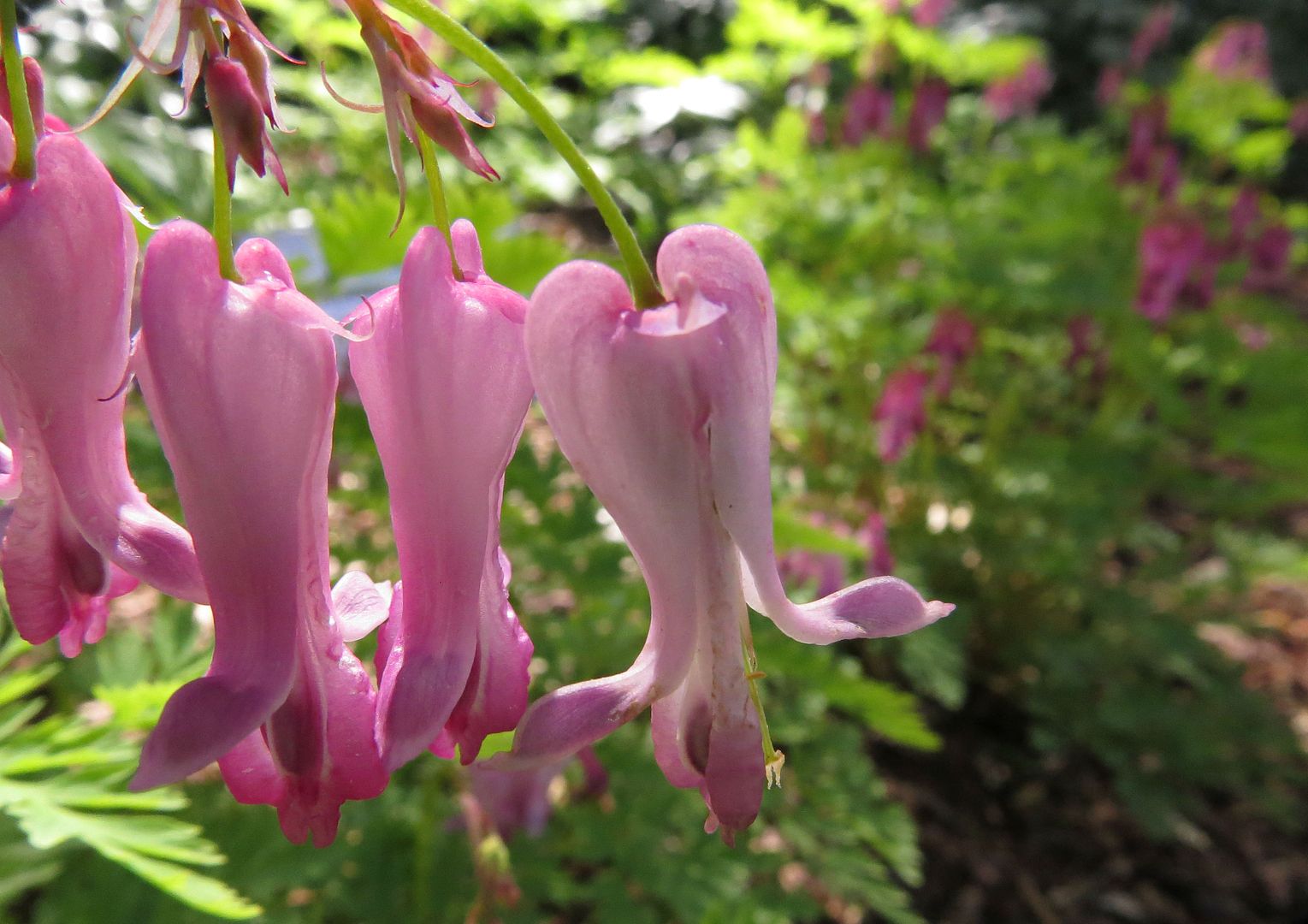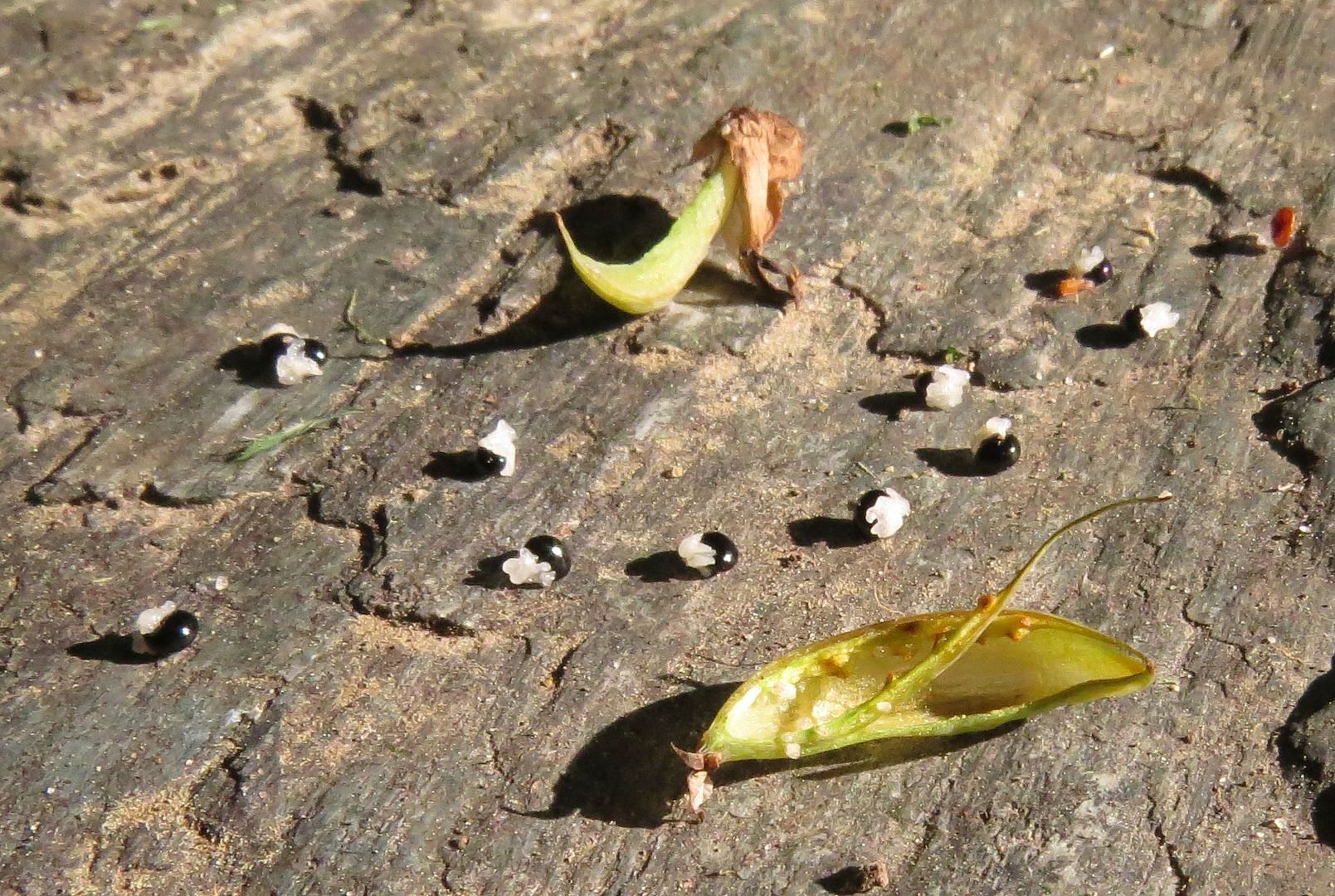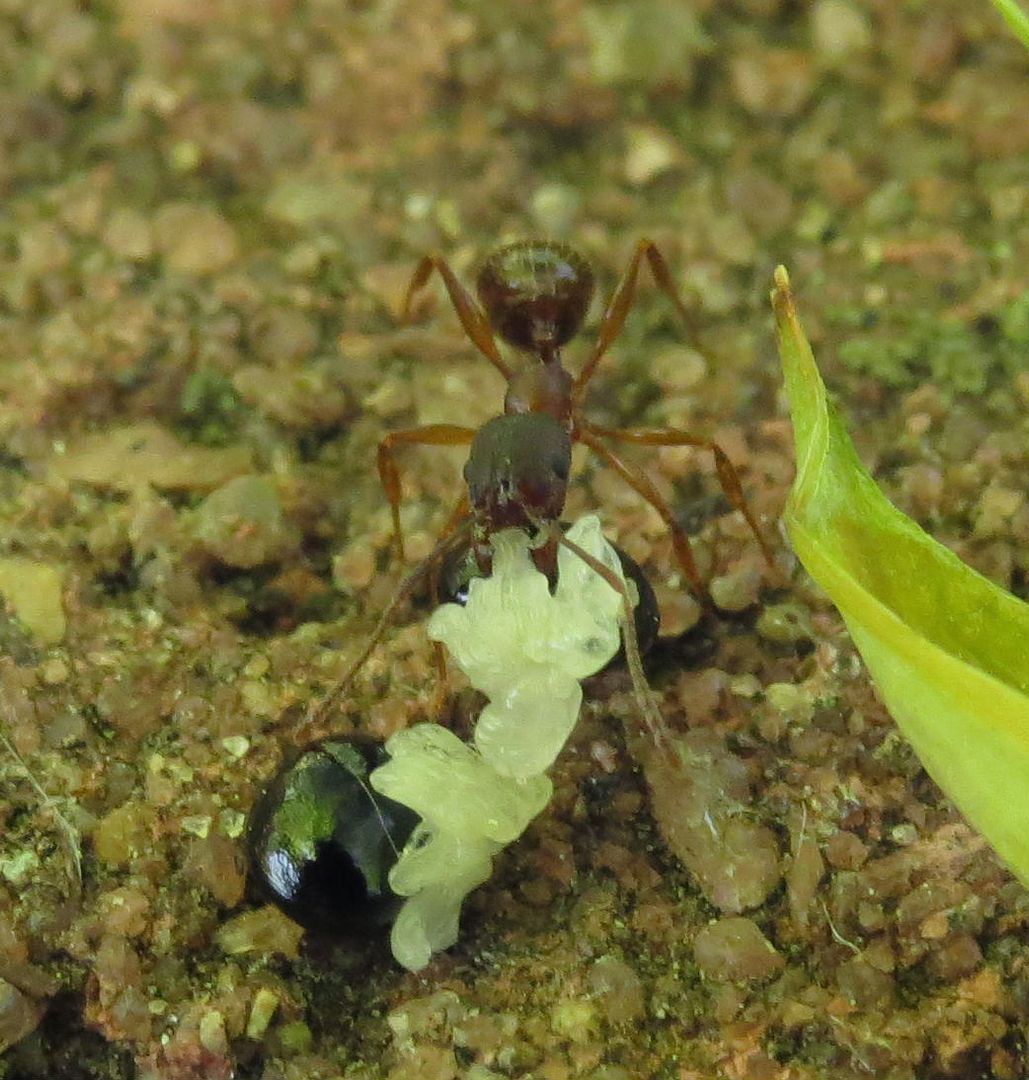Wednesday, June 4, 2014
Myrmecochory: Turkey Corn (Dicentra eximia)
Turkey Corn, Dicentra eximia, is a ... wildflower? I don't think it dies back technically until the autumn so it's not an ephemeral. The peak bloom is in the springtime though alongside the majority of our ephemerals in North America. A lot of people mistake this for Bleeding Heart, Lamprocapnos spectabilis, but that's a different genus and it's not native; it's also more commonly sold by nurseries but both tend to be available if you look hard enough. Turkey Corn is better though because, despite the flowers not being as heart shaped, it actually blooms year round until it goes dormant in the autumn.
Maybe 4 to 6 weeks after flowering seed pods will form on some of the blooms. Oddly enough though I've never seen any pollinators tending to the flowers so perhaps nocturnal moths are what it attracts? Seeds are tiny black beads with packets of elaiosome on them.
Elaiosome is a lipid rich substance that ants find irresistible. Nutritionally speaking, it has more in common with a dead insect than nectar or honey, thus the ant thinks it's just found a dead bug, or eggs. It's been found that this substance effects the caste system within the colony. Some species will produce more new queens while others produce more workers over reproductive. So colonies will either go bigger or spread faster depending on which ant we're talking here. Both can benefit the plant in the long run. A bigger colony will plant more seeds in a central location; colonies also move and change location every year or two thus multiple patches are planted over the years. New queens produce more colonies overall so the seeds from one patch of plants can be taken in multiple directions potentially.


